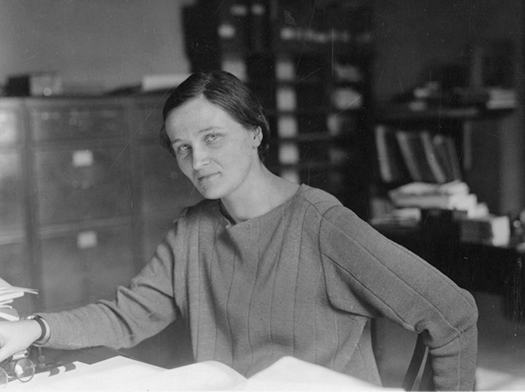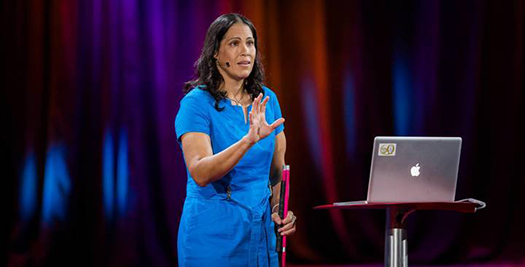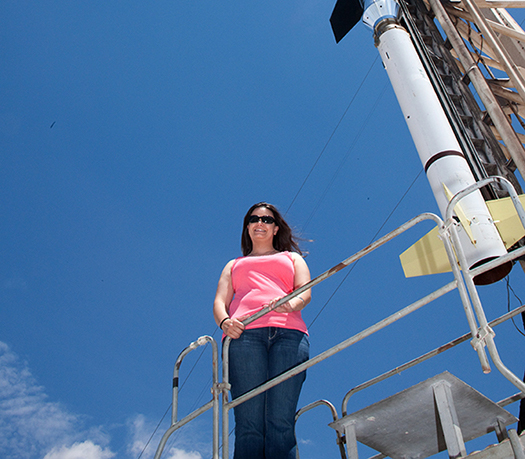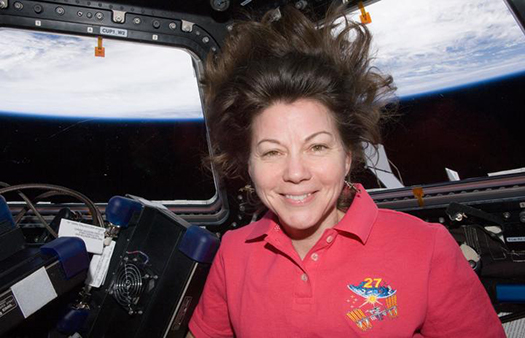Women Who Chase The Sun

Credit: Kristin Divona, NASA/CXC
Women have played a key role in observing solar eclipses and expanding our understanding of how the Sun, our nearest star, works.
The total solar eclipse that will take place over North America in a couple of weeks is a chance for millions of people to experience an exciting event (with proper viewing glasses to protect our sensitive eyes, of course!). Given the population's demographics, it stands to reason that about half of those who will be under the spectacle of totality will be women.
This is rather appropriate to reflect on. To quote the title of the best seller by Nicolas Kristof and Sheryl Dunn (by way of Mao Zedong), "women hold up half the sky." But women have been doing far more than just shouldering the weight of the heavens over the years. We have been actively studying the Sun, Moon, stars and beyond for millennia. Women have played a key role in observing solar eclipses and expanding our understanding of how the Sun, our nearest star, works.
Here is a brief introduction to just a few of the many women who have chased the Sun for the benefit of all, from antiquity through present day.

Hypatia, Credit: Jules Maurice Gaspard
Born around 350 AD, Hypatia was considered to be the world's leading mathematician and astronomer of her time in Greece and Egypt. While much of the recordings of Hypatia's work has been lost, we do know that she studied the Sun, Earth, and other parts of the Solar System. Scholars also found evidence that she was extraordinarily skilled at making astronomical instruments, some of which were used by scientists for centuries after her death. She would very likely have worked with a device to predict solar and lunar eclipses.
Wang Zhenyi was a scientist during the Qing dynasty in 18th century China, a time when gender equity was not exactly in fashion. Bucking the conventions of feudal China, she educated herself in topics such as astronomy, medicine, geography and mathematics. In addition to studying what other astronomers had accomplished, she conducted her own research, including designing and constructing experiments that described the relationship between lunar and solar eclipses. Among her many works were articles like "The Explanation of a Solar Eclipse" as well as "The Explanation of a Lunar Eclipse."

Maria Mitchell, Credit: H. Dassell
When Maria Mitchell was a child, she observed a total solar eclipse with her father, which spurred her to continue studying the stars. Born in 1818 on Nantucket, Mitchell went on to become what many consider to be America's first professional female astronomer. After receiving her education at school and through her father's tutoring, she calculated navigational courses for long whaling journeys as a teenager. Later, she became the first librarian of the Nantucket Atheneum. In 1865, she became a professor at the newly-established Vassar College and continued to inspire and teach until her death in 1889.

Cecilia Payne-Gaposchkin, Credit: Smithsonian Institution
In 1919, when she was 19 years old, Cecilia Payne went on a solar eclipse expedition to the west coast of Africa to observe and photograph the stars. Overcoming tremendous prejudice due to her young age and gender, she continued on to become the first person to earn a Ph.D. in astronomy from Harvard-Radcliffe, and the first woman to chair a Harvard department. Payne-Gaposchkin's dissertation was nothing short of revolutionary for the study of stars. She determined that stars – including our Sun – were mostly made of hydrogen and helium, challenging the generally accepted wisdom at that point. Unfortunately, the establishment at Harvard at the time largely dismissed her results. Decades later, the field of astronomy would finally recognize the significance and importance of Payne-Gaposchkin and her work.

Wanda Diaz-Merced, Credit: Bret Hartman (TED)
While studying physics at the University of Puerto Rico, Wanda Diaz-Merced lost her eyesight after a prolonged illness. She didn't let this profound change prevent her from achieving her dreams of becoming an astrophysicist and computer scientist. Among her many scientific accomplishments, she has developed innovative ways of turning data from stars into sound in a process called "sonification". She has worked with data from NASA's Chandra X-ray Observatory previously Dr. Diaz-Merced recently worked with the Harvard-Smithsonian Center for Astrophysics, one of the world's prestigious and largest astrophysical research facilities, to consult on an application that provides ways for people who are visually impaired to "hear" and experience totality during an eclipse.

Kelly Korreck, Credit: Kelly Korreck/CfA
As a solar physicist, Dr. Kelly Korreck investigates the critical details of how the Sun and other stars work. To pursue this goal, Korreck builds and operates scientific instruments that are launched into space aboard satellites. She has worked on many solar projects, and she is currently helping to lead one of the instruments on NASA's Parker Solar Probe that will launch in summer 2018 and be the first to "touch" the Sun. During the solar eclipse of 2017, Korreck will be aboard the USS Yorktown off the coast of South Carolina discussing the event with media and the public.

Cady Coleman, Credit: NASA
For Dr. Cady Coleman, born in 1960, attending a lecture by Sally Ride as an undergraduate helped her see that she, too, could become an astronaut. Coleman flew her first mission to space in 1995, and by the time she retired from NASA in 2016, she had spent over 180 days on the Shuttle and aboard the International Space Station. In other words, she has witnessed more sunrises and sunsets than many space explorers. (In low-Earth orbit, astronauts get to witness about 16 sunrises and 16 sunsets each day.) Coleman, who was on the STS-93 mission that launched the Chandra spacecraft, was also responsible for the observatory's deployment. This summer, Coleman is teaming up with CNN and Volvo to help live-stream the Great American total solar eclipse on August 21. The project will capture the eclipse across 360 degrees and in 4k-resolution, bringing a phenomenal event to those who can't be there in person.
All of these women overcame obstacles to pursue their dreams and careers. These scientists, mathematicians, and explorers personify the possibilities that can be achieved for individuals and humanity as a whole when thoughtful and thought-provoking people are able to follow their passions into the area of their choosing. As the total solar eclipse occurs on August 21, we can all be grateful that each of these women – facing a range of challenges and in their own ways — nevertheless persisted.
During the Great American Eclipse of 2017, Megan Watzke will be watching from Sun Valley, ID, while Kimberly Arcand will be giving a talk in Charleston, SC. Together, they are the authors of "Light: The Visible Spectrum and Beyond" published by Black Dog & Leventhal. Their latest book, "Magnitude: The Scale of the Universe" by the same publisher will be available on November 7, 2017.
This article previously published on www.huffingtonpost.com on August 8, 2017.
Credit: Kimberly K. Arcand (Huffington Post Contributor) and Megan Watzke (co-author)
Please note this is a moderated blog. No pornography, spam, profanity or discriminatory remarks are allowed. No personal attacks are allowed. Users should stay on topic to keep it relevant for the readers.
Read the privacy statement

